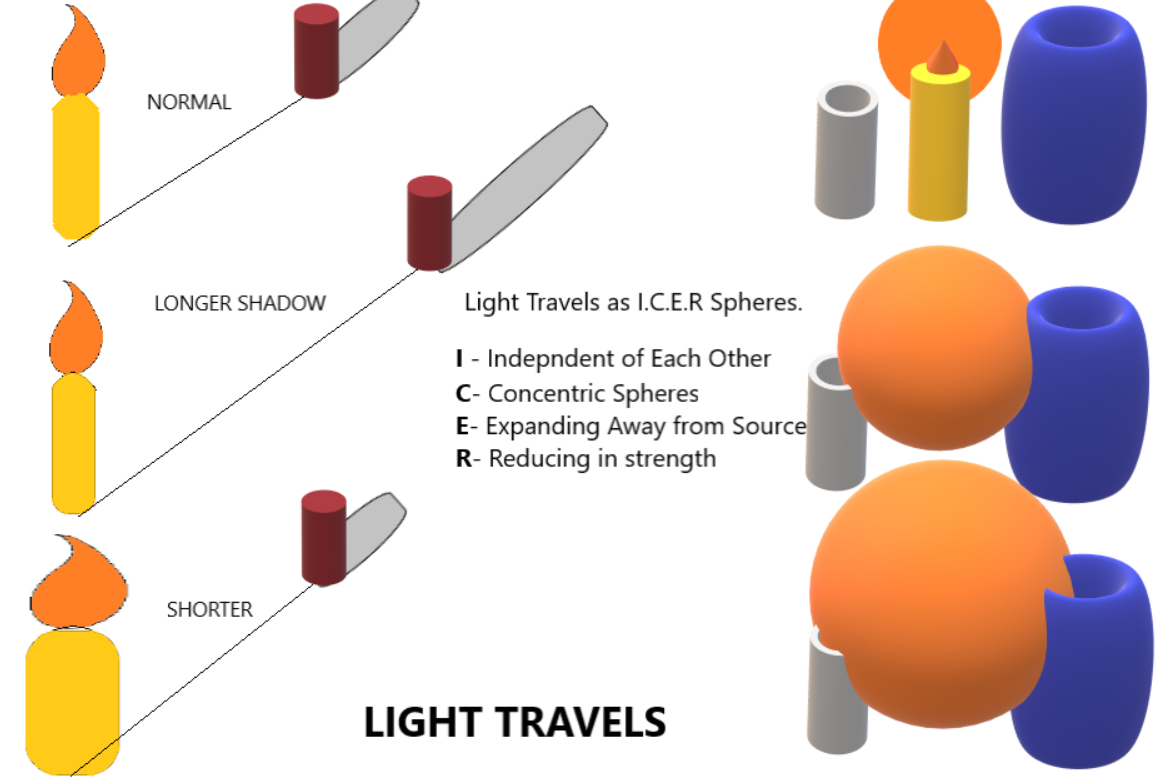HOW DOES LIGHT TRAVEL
Status Quo
Your content goes here. Edit or remove this text inline or in the module Content settings. You can also style every aspect of this content in the module Design settings and even apply custom CSS to this text in the module Advanced settings.
Straight or wave:
As the light from a source travels straight, the distance between adjacent rays of light keeps increasing. When you are observing the source from astronomical distances, the gap is considerable. When you step to the right or left, the star should be invisible. Even if the light is travelling as a wave this observation of source disappearing when stepped right, left, above below will hold true.
Expanding Bubble:

Consider a star many light years away. As shown, there are three observational planes each a part of a sphere. A is light years away from source star, B is many light years away and C is many-many light years away. Each sector is light years across. When you observe the source star from A it looks brighter and dimmer at B. Brightness is same when looked from any point in respective sectors which is light years across.
This is possible only if the light travels as a continuous layer that is spherical in nature and is expanding outwards. This is as though, the spherical layer when at A was thicker and by the time it reached B it became thinner. From C, the star is invisible thus indicating that the sphere ceased to exist at C.
But the issue with the spherical layer hypothesis is the continuity. So, it will have to be continuous layers of spherical bubbles. One after the other. Each layer independent of the preceding layer. Thus, the source is putting out continuous bubbles of light that are expanding outwards and growing weak.

When there is an obstruction this bubble has a tear in its surface. But the peculiar thing about this tear is that the layer is repairing itself. That is how you see the shadows not so crisp. When you retain the obstruction at the same distance and increase the strength of source the shadow will start to disappear. This is because the tear gets repaired faster. The shadows are longer when the obstruction moves away from the source that is kept constant because the tear takes it longer to repair.
What happens when this spherical layer hits an opaque surface? Will it reflect the same way as a straight line? Instead, the layer bounces as though it inverses itself inside out. And the surface itself acts like a new light source.
Interference pattern applies just as in the case of waves.

0 Comments